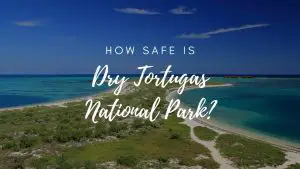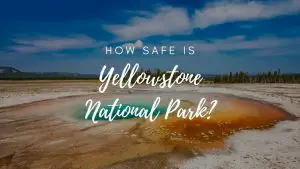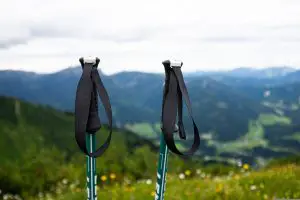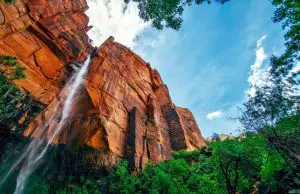Is Badlands National Park Safe? (2023)
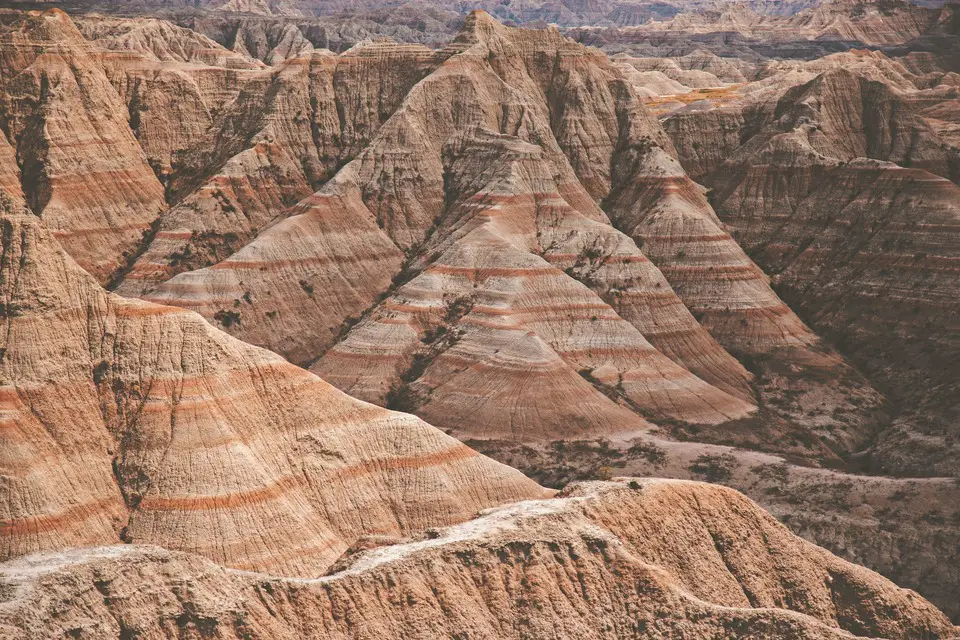
A visit to the Badlands National Park in South Dakota is like no other. Be prepared to see the most gorgeous sandstone formations, where arid, dusty plains meet a seemingly infinite sky.
As far as safety is concerned, Badlands National Park is safe to visit; however, there are a few things to be careful of, some of them unique to this dazzling national park. This article will cover some of the most important things to look out for at Badlands National Park.
Quick Links
What Are The Biggest Dangers At Badlands National Park?
The biggest dangers at Badlands National Park are dehydration, getting lost, the rough terrain, and potentially dangerous encounters with wildlife.
Dehydration
Dehydration is a very real danger in the Badlands. The heat and lack of shade make it easy to dehydrate, especially if you are hiking or doing any strenuous activity. Make sure to drink plenty of water and take breaks in the shade when possible.
Getting lost
The vastness of the landscapes at Badlands can be disorienting, and it is easy to wander off the trails. Make sure to stick to marked trails, carry a map, and let someone know where you are going before heading out into the Badlands. In addition, cell-phone service WILL be limited once you venture forth into the park, so be aware of that.
Hot/cold weather
Badlands National Park is situated in South Dakota, which is known for its high heat and cold. If you’re going in the summer or winter, carry proper clothing and equipment (such as gloves) to keep yourself comfortable.
Rough terrain
Badlands National Park is made up of steep hillsides covered in sandstone rocks. The rough terrain can also cause trouble for tourists. Many people get injured on the uneven ground of the park’s Badlands Loop Road, which leads to Devil’s Tower. The area around Devil’s Tower is especially dangerous—it’s more than 200 feet high and rocky with no guardrails to speak of.
The terrain also makes it difficult for people with mobility issues or disabilities to navigate through the park on foot. If you have any kind of disability or health concerns related to mobility, please contact the National Parks Service for assistance before planning your visit.
Dangerous wildlife
Wildlife can be found all throughout Badlands National Park. The most dangerous animals in the park are bison, which have been known to attack humans. Other potentially dangerous wildlife includes bears, coyotes, and rattlesnakes.
Is Badlands National Park Safe At Night?
The Badlands National Park is an incredible place to hike and explore at any time of the day. But what if you’re out at night?
Here are some of the most common night-time hiking dangers and how to avoid them.
The first thing to consider is that there is no such thing as too much planning in terms of hiking safety. Always research your route before heading out on your hike; this way, you can make sure you know where you’re going and how long it will take you to get there without risking injury.
Another important thing to keep in mind is that running water is rare in the park—so don’t rely on streams for drinking water! Your best bet for keeping hydrated is carrying plenty of extra water in your pack and refilling it from natural sources whenever possible (like creeks).
Finally, remember that most wildlife is more active at night—so be sure not to leave anything unattended or unprotected while camping or hiking through the park at night.
Is it Safe to Go Alone To Badlands National Park?
If you’re looking to go hiking in Badlands National Park, you might wonder whether it’s safe to go alone. While it’s a little more dangerous than usual to hike alone, there are some precautions you can take to ensure you stay safe while exploring the park.
First, know that Badlands National Park is a place of natural beauty and wonder—but it’s also a place where nature can be unpredictable. The terrain can change with each step you take, and many species of wildlife live in the park, including bison and elk.
In addition to the dangers posed by the terrain and wildlife, it’s important to be aware of the risk of getting lost in the park. Badlands is huge—nearly 244,000 acres—and it can be easy to wander off the trails if you’re not paying attention.
Is It Safe to Drink Water in Badlands National Park?
It’s important to note that drinking water from natural sources like lakes can be unsafe. The main reason for this is the risk of bacterial contamination. When hiking through Badlands National Park, ensure you know how to purify your water before consuming it. Here are some of the most common methods:
Boiling
This method is probably the easiest and safest way to purify your water. Before boiling, pour clean water into a clean container and then bring it to a boil. After boiling for about five minutes, let cool for at least 30 minutes before drinking or using as drinking water.
Chemical Filters
Chemical filters work by removing bacteria and other particles from your water using chemicals like iodine or chlorine dioxide. These filters are usually inexpensive and easy to use, but they can also have some side effects on your health if used improperly.
What Wildlife Do You Need To Be Careful Of In Badlands National Park?
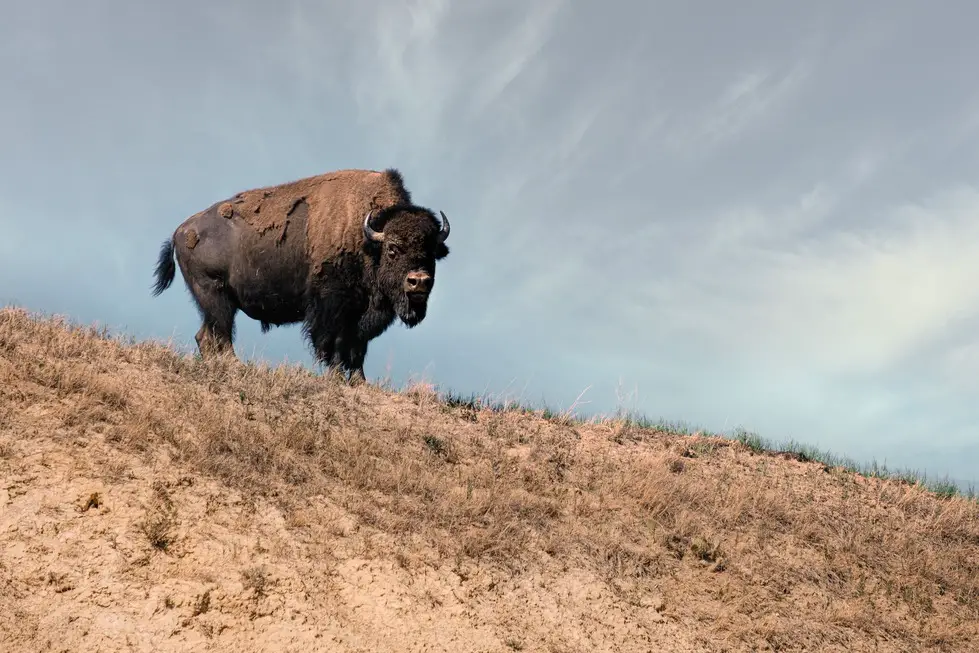
Badlands National Park is a beautiful place to visit, with its striking landscape of towering rock formations, sandstone bluffs, and jagged canyons. The park also boasts an impressive variety of wildlife.
The park’s most common wildlife include:
- bison
- rattlesnakes
- pronghorns
- bighorn sheep
- black-footed ferrets
- prairie dogs
- birds of prey
- coyotes
Let’s cover a few of the big ones.
Bison at the Badlands
The American bison is the largest land mammal in North America. These massive animals can weigh up to 2,000 pounds and reach heights of up to 6 feet at the shoulder. Despite their size, bison are incredibly fast and able to run up to 35 miles per hour.
While bison are generally peaceful animals, they can be dangerous if provoked. If you see a bison in the park, it’s best to give it a wide berth and admire it from a distance. As a matter of fact, the NPS advises staying 100 feet away from all wildlife, including bison.
Rattlesnakes at the Badlands
There are two types of rattlesnakes that call the Badlands home: the western diamondback and the prairie rattlesnake. Both of these snakes are venomous, and their bites can be fatal to humans if not treated immediately.
If you’re hiking in the Badlands, it’s important to be on the lookout for rattlesnakes. They’re often found sunning themselves on rocks or hiding in tall grass. If you see a rattlesnake, the same strategy applies. Stay far away and don’t try to touch or move it.
Bighorn Sheep at the Badlands
The Badlands is home to a large population of bighorn sheep, which are easily recognizable by their massive horns. These animals are generally calm and not aggressive towards humans, but they can be dangerous if they feel threatened.
Although generally docile animals, bighorn sheep can and will charge and attack humans if they feel cornered or threatened.
Hiking Safety Tips for Badlands National Park
Hiking in Badlands National Park can be a beautiful and rewarding experience. Now that we’ve covered some of the dangers you might encounter while hiking in Badlands National Park, let’s talk about some precautions you can take to stay safe while hiking.
Stay alert
Badlands National Park can be full of potential pitfalls for novice hikers, and the best way to avoid them is to be aware of your surroundings at all times.
Be prepared with proper gear
It’s important to have the right hiking gear on hand when you venture into any location that isn’t familiar territory, including Badlands National Park. In addition, due to the park’s unique terrain, hiking boots are a must.
Bring enough water
You’ll need plenty of water if you’re hiking long distances or through wooded areas, so bring at least two liters of water per person. If you’re going on a longer hike, consider bringing along a hydration pack as well as water bottles that are easy to access while hiking.
Use sunscreen. The heat in the Badlands can get as high as 120°F. So don’t be shy with the sunscreen!
Conclusion
Badlands National Park is a beautiful and unique place, but it’s important to be aware of the dangers that come along with its rugged terrain. By following the tips in this article, you can help ensure a safe and enjoyable experience for everyone involved. Enjoy your next trip to the Badlands!

